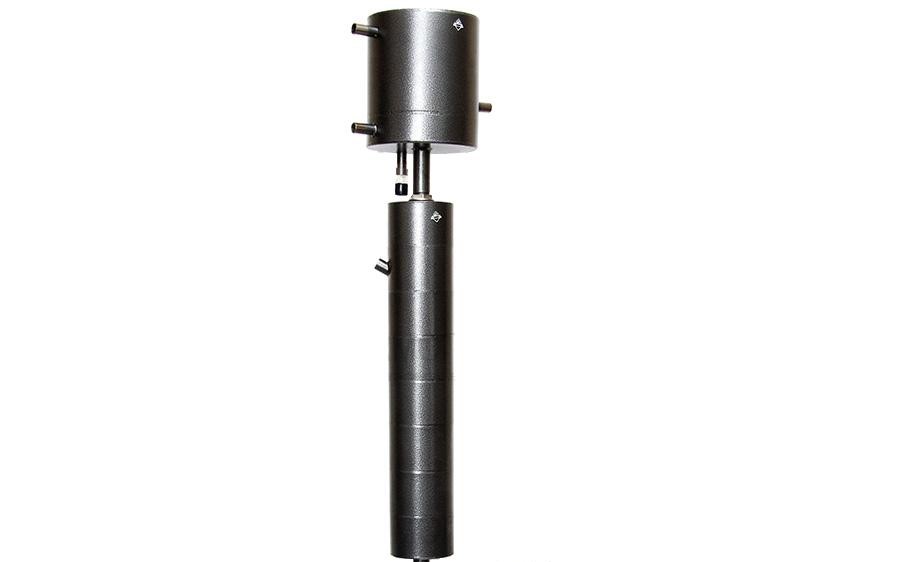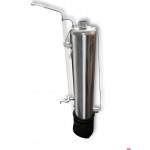
Rectification Column: Operating Principle and Usage Methods
Today's stores offer a wide range of equipment for moonshine production, often marketed as rectification columns. Their operation is based on advanced methods of alcohol production, guaranteeing consumers a high-quality product in the shortest time and with minimal energy consumption. We recommend buying a rectification column from Ukrpromtech. They have a wide selection of products at optimal prices.
Why is a Rectification Column Necessary?
If you use the standard distillation method in a moonshine still, achieving a high-quality product requires 8 to 10 distillation cycles. With each new distillation, the output strength gradually increases.
Experts note that such a number of distillations consumes a lot of energy, making the process quite costly. Additionally, it is risky: distilling liquids with high ethanol content at home, especially multiple times in a row, is considered hazardous.

The column achieves the same effect as 8-10 distillations in one go. This is thanks to the contact elements inside. During rectification, substances evaporate, and condensation occurs repeatedly, resulting in maximum purification of alcohol vapors and a significant increase in their proof.
The alcohol produced is of high quality because all harmful impurities are returned to the still in the reflux during rectification. In essence, a rectification column is equipment where both distillation and alcohol purification occur.
How Does a Rectification Column Work?
Let's examine in detail how a rectification column works to understand its usage features and advantages in moonshine production.
When assembled, the column is installed exclusively in a vertical position. The raw material is loaded into the tank, and heating is then applied. As the liquid begins to boil, vapor gradually rises in the column. Eventually, it reaches the deflegmator – a cooling unit equipped with a sampling node.
As a result, the liquid from this cooling unit, condensing there, partially returns, and partially is drawn off for output. As it flows down the column, it interacts intensively with the vapor, occurring over a large number of small elements.
It is worth noting that these elements have various surfaces – such as balls, springs, and rings. All of this is combined into what is called a packing. The part of the liquid flowing back down the rectification column elements is known as reflux.
During this time, condensate begins to form. The fact that some of the condensate returns to the column ensures its stable and continuous operation. There is even a concept of reflux ratio, which denotes the amount of condensate sent out and returned to the column. Part of the product needs to be removed; otherwise, the reflux ratio will be infinite.
Interacting with the reflux, the vapor transfers substances that boil only at higher temperatures, as well as its own energy. Substances with lower boiling points rise to the top.
As a result, substances are distributed more or less evenly: those boiling at high temperatures accumulate at the bottom, while those not requiring maximum temperature rise to the top. Low-boiling substances are easily extracted as they move directly to the deflegmator. This allows for effective separation of liquids from each other and, if necessary, their selective extraction.
Elements of the Rectification Column
An important part of the rectification column during moonshine production is the various packings. These are its internal elements, most of which are loose. The simplest and most standard type of packing is metal scrubbers used for washing and cleaning dishes. For this, it is enough to find a magnet that will immediately react to the metal.
Why Wrap the Column in Insulation?
This is a necessary detail that must always be observed during moonshine production. Insulation, performing its standard functions, minimizes the impact of external factors on the rectification process. It is important to remember that the operation of the entire column directly depends on how stable and uniform the temperature is distributed along its length. For this reason, using insulation is considered completely justified during rectification.
Raw Material for the Rectification Column
For moonshine, it is ideal to use raw alcohol, as it is initially free of major impurities and will not foam as may occur with mash. In the latter case, there is a risk of foam entering the column, which is highly undesirable. Organizing equipment after such an event is extremely difficult.
Among experienced moonshiners, there is even a term "column flooding." This describes the process when liquid coming from the deflegmator begins to accumulate instead of returning to the still.
This can happen for various reasons. For example, due to excessive heating power, where a large flow of vapor prevents the reflux from flowing downward. It can also occur due to design flaws:
- Narrow spots formed in the column;
- Hard-to-pass mesh installed for the reflux, preventing it from returning to the still;
- Packings excessively compressed.
When flooding occurs, there is a loud splashing, and the distillation process starts to be accompanied by significant noise. As a result, the contents of the column may start to spill out through the deflegmator opening at the top, contaminating everything around.
When flooding occurs due to excessive heating, it is necessary to quickly reduce the flame. In this case, things will return to normal fairly quickly. However, if there are design flaws, they can only be fixed by reworking the column. Such problems arise when columns are assembled independently; factory models practically eliminate such issues.
Advantages and Disadvantages of Using a Rectification Column
Modern rectification columns have many advantages, which is why many choose them for mastering moonshine production.
The main advantages of this equipment include:
- The ability to produce high-quality alcohol at home. As a result, alcoholic beverages come out with the required strength and maximum degree of purification.
- The product has no unpleasant odor and does not require re-distillation.
- Columns are initially equipped with all necessary equipment and parts. Therefore, they can operate even independently, without the participation of a moonshine still.
- No additional knowledge is required during operation. The main thing is to carefully monitor to ensure that the pipes do not become clogged during purification. Everything else will naturally work out.
- Depending on the power of the product, it is possible to start producing alcohol in significant quantities.
Among the disadvantages, the following are noted:
- Long distillation process;
- Low productivity – no more than one liter per hour;
- High cost.
Comparing the pros and cons of rectification columns, it is important to note that the owner receives a high-quality product that has undergone multiple purifications. Therefore, if the goal is to obtain a high-quality strong drink at home, a rectification column will be the optimal choice.
Also read:









